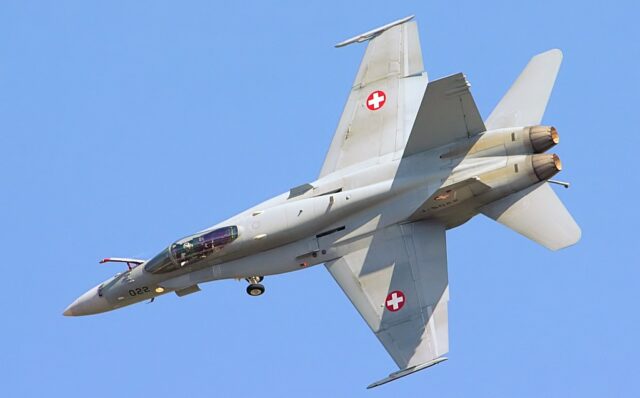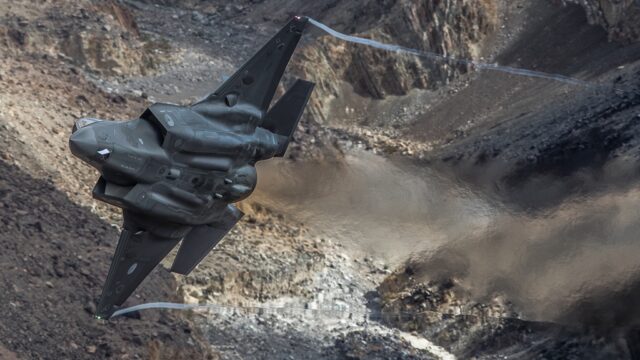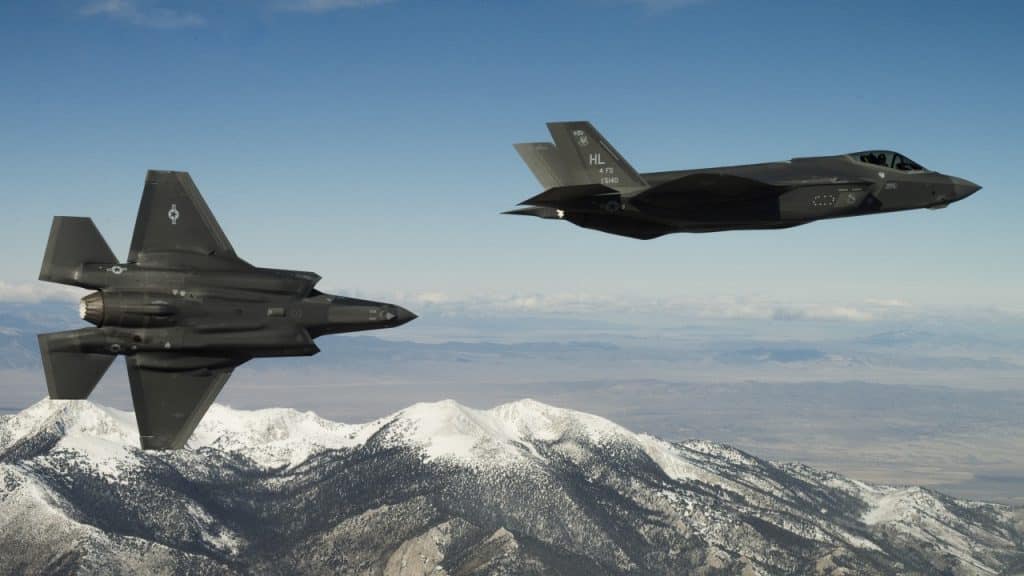Swiss officials today signed an agreement to procure thirty-six F-35A Lightning II multi-role combat aircraft. The maximum value of the contract accepted in the referendum by Swiss citizens is 6.035 billion francs (29.4 billion zlotys). The F-35A will replace the obsolete F-5E / F Tiger II and F / A-18C / D Hornets. The contract was signed by the head of the military procurement agency Armasuisse Martin Sonderegger and project manager Darko Savic.
On September 15, the Swiss Federal Assembly finally voted to purchase the F-35A, opening the way for the government to sign the contract and formally order the aircraft. MEPs felt that there were no grounds to delay the procedure until the vote on the citizens’ initiative “Stopp F-35”. The initiative came from the Gruppe für eine Schweiz ohne Armee (a group for Switzerland without armed forces), a pacifist political movement seeking to liquidate the Swiss army as such.
The MPs of the Federal Assembly also decided that the old Tigers II, of which twenty-five still remain in service, are to continue to fly until the F-35s appear in Swiss aviation. Deliveries of American machines should start in 2027 and will last three years.
-ADVERTISEMENT-

The first eight machines will be built at Lockheed Martin’s factory in Fort Worth, Texas. These copies will also be used to train Swiss pilots and technicians. The next twenty-four will be produced by Leonardo at the Final Assembly and Check Out (FACO) plant in Cameri. It is not yet known what about the last four.
Lockheed also offered the possibility to assemble four copies in Switzerland in order to familiarize the local air force and industry with the design of the F-35, which would positively affect the understanding of its operation and servicing. A final decision has yet to be made, because while the benefits are obvious, running an assembly line for four fighters will be costly. Should Bern opt out of this option, the order will be forwarded to Cameri.

Swiss F / A-18C.
(Tim Felce, Creative Commons Attribution-Share Alike 2.0 Generic)
The victory of Amherd’s favorite Lightning II was announced last June. In addition to Lockheed Martin’s proposal, Boeing F / A-18E / F Block III Super Hornet, Dassault Rafale and Eurofighter Typhoon competed for the contract. The F-35A proved to be the cheapest of all proposals in terms of total fleet service cost for thirty years. The total expenditure is to reach 15.5 billion Swiss francs (63.8 billion zlotys).
In the spring of 2019, tests of all candidates were organized in the Payerne database. Each trial was carried out with one or two aircraft that completed eight tasks in four days. Previously, suppliers had the opportunity to familiarize themselves with the foreseen scenarios, the surrounding terrain and the procedures in force in Swiss airspace. One flight was made during the night. The Saab JAS 39E Gripen was excluded from the tender. The Swiss wanted to test only airplanes that were already operational at that time, and the fact that the Gripen E was to enter service much earlier than the planned deliveries of fighters to Switzerland did not matter.

Dutch F-35A in test at Edwards base in the United States.
(Ministerie van Defensie, CC BY-SA 4.0)
The purchase of American fighters was controversial from the very beginning. In the 2020 referendum, with a turnout of 59.4%, only 50.1% of participants voted in favor (8,670 votes in the difference between the “yes” and “no” options). The reports of Viola Amherd’s lack of objectivity did not help. Nobody has ever accused her of being a Lightning II supporter for non-substantive reasons, but in the last phase of the tender, more and more voices were raised that it was a “tender for the F-35”.
Substantive criticism, matter-of-fact and sharp, also came from military circles. Its author was the retired general André Blattmann, commander of the Swiss armed forces in 2009–2016, who recommended reflecting on the role of aviation in the country’s defense system. Although the tender required the ability to attack ground targets, the risk of an armed conflict in which Switzerland could become entangled is practically zero in the medium term. The tasks of the Swiss Luftwaffe fighters focus on air policing missions, although taken very seriously. According to Blattmann, twenty machines are more than enough for this type of operation.
The general warned that drones, against which supersonic planes are not effective, pose a much greater threat to national security, and urged the revision of the new integrated air defense system “Air2030”, which includes the purchase of fighters, in this regard. Blattmann recommended that the funds saved on the purchase of aircraft should be allocated to the development of capabilities in the field of drone neutralization and cybersecurity.
Simultaneously with Lightning, Switzerland will also buy five Patriot systems with M903 launchers and MIM-104E missiles as part of the BODLUV 2020 program (BODengestützte-Luft-Verteidigung), assuming a comprehensive refreshment of Swiss air defense and the withdrawal of, among others, obsolete British Rapier systems. Here, in turn, Raytheon’s offer was superior to that of Eurosam with the SAMP / T system. The third participant in the tender was to be the Israeli Raphael with Proca Dawida, but in the end he did not submit an official offer.
See also: Malaysia wants to buy back the entire fleet of Kuwaiti Hornets
US Air Force / Staff Sgt. Andrew Lee

